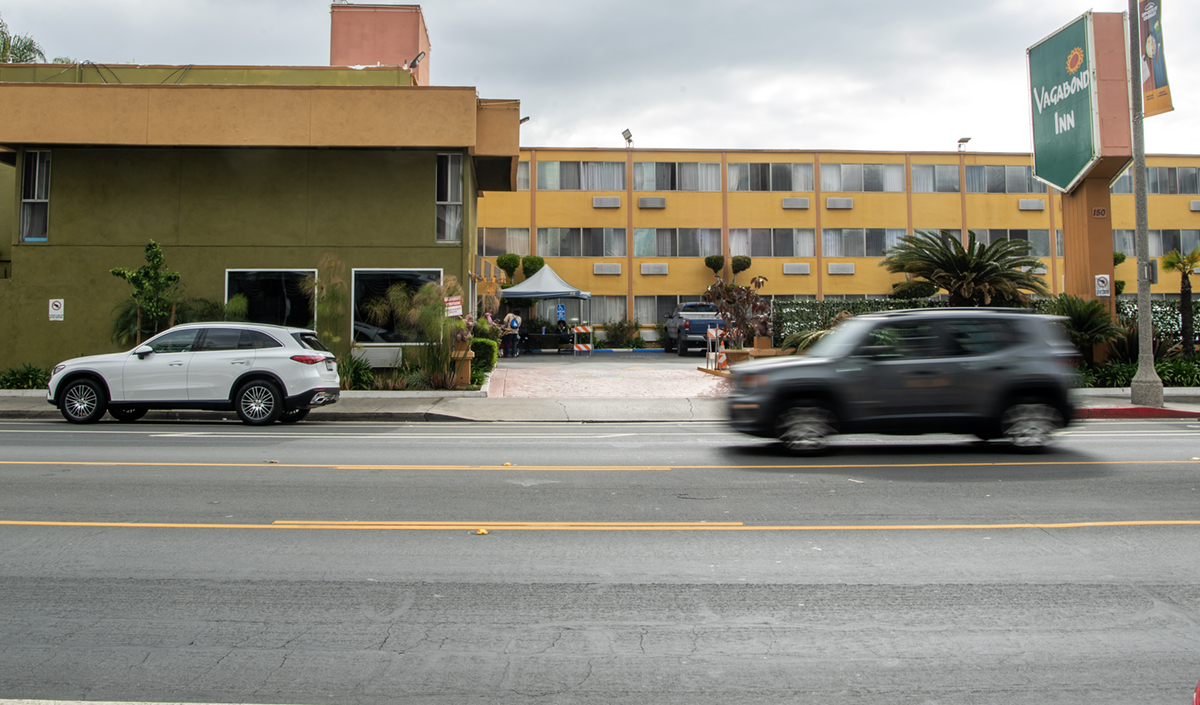After a multi-million dollar pilot to house homeless people at the Vagabond Inn ended last month, Long Beach officials continue to rent motel space elsewhere for more than a dozen of them still seeking permanent relief from the program.
Officials hope to have them placed elsewhere “within the next month or so,” be that at a permanent home, some form of temporary shelter or another motel.
It comes as the city ended its $2.4 million pilot at the 60-room Vagabond as of June 1. The one-year pilot temporarily housed people who would otherwise languish in the clusters of tents and shanties along a five-block stretch downtown, including Lincoln Park, around the Metro A Line and outside Billie Jean King Main Library.
These are people with a high rate of drug overdoses, mental illness and chronic homelessness — meaning they’ve been unhoused for more than five years, according to the city’s application for state funding that covered the project.
In their application, the city set a goal of placing 90 homeless people at the Vagabond in service of moving 110 people from the downtown encampment areas into permanent housing by November 2025.
As of this month, the city will have moved 19 people from the Vagabond into permanent housing — four more found housing on their own — transitioned 27 into emergency shelters and 30 more into “some form of sheltered situation besides Permanent Housing,” according to the city health department.
Health officials say people enrolled in the pilot stayed an average of 182 days at the Vagabond. Many stayed the full year, said Homeless Services Bureau Director Paul Duncan.
Ahead of the program’s end date, 15 people were moved from the Vagabond Inn to the Long Beach Motel on May 30, at a cost of $100,000.
Homelessness officials took this measure, “due to a lack of available capacity at other contracted motel sites,” according to city health spokesperson Emily Rodriguez.
Rodriguez said the department is getting closer to moving the 15 Long Beach Motel tenants into more permanent housing. About half of them have been matched to project-based vouchers, one connected with veterans affairs supportive housing, and several others are “working with rapid rehousing.”
“Teams are actively working on a range of housing solutions, including placements at Zephyr (supportive housing) and other permanent housing options,” Rodriguez wrote in an email. “A few individuals are expected to transition into other non-congregate shelter settings based on their specific needs.”
There’s no guarantee all 15 will have their housing solved in the next month. Permanent housing, Rodriguez wrote, operates on approval timelines that vary with each person.
“For those still actively engaged and working toward housing solutions, we will continue transitioning them into other contracted motel voucher programs,” Rodriguez wrote. “Our broader goal remains to move individuals into permanent housing options as quickly as possible, while carefully managing the motel voucher funds. In addition to the Long Beach Motel allocation, we still have $100,000 in reserve to support ongoing interim placements.”
City data shows its shelter space is typically at 93% occupancy — over 90% capacity since 2022 — while 99% of its emergency housing vouchers are used.
Citywide, it took an average of 251 days for someone in 2024 to be placed in permanent housing — triple the time it took in 2020. But the time it takes for people in interim housing to find a permanent place to live has decreased steadily since 2022, from 246 days to 136 days in 2024.

